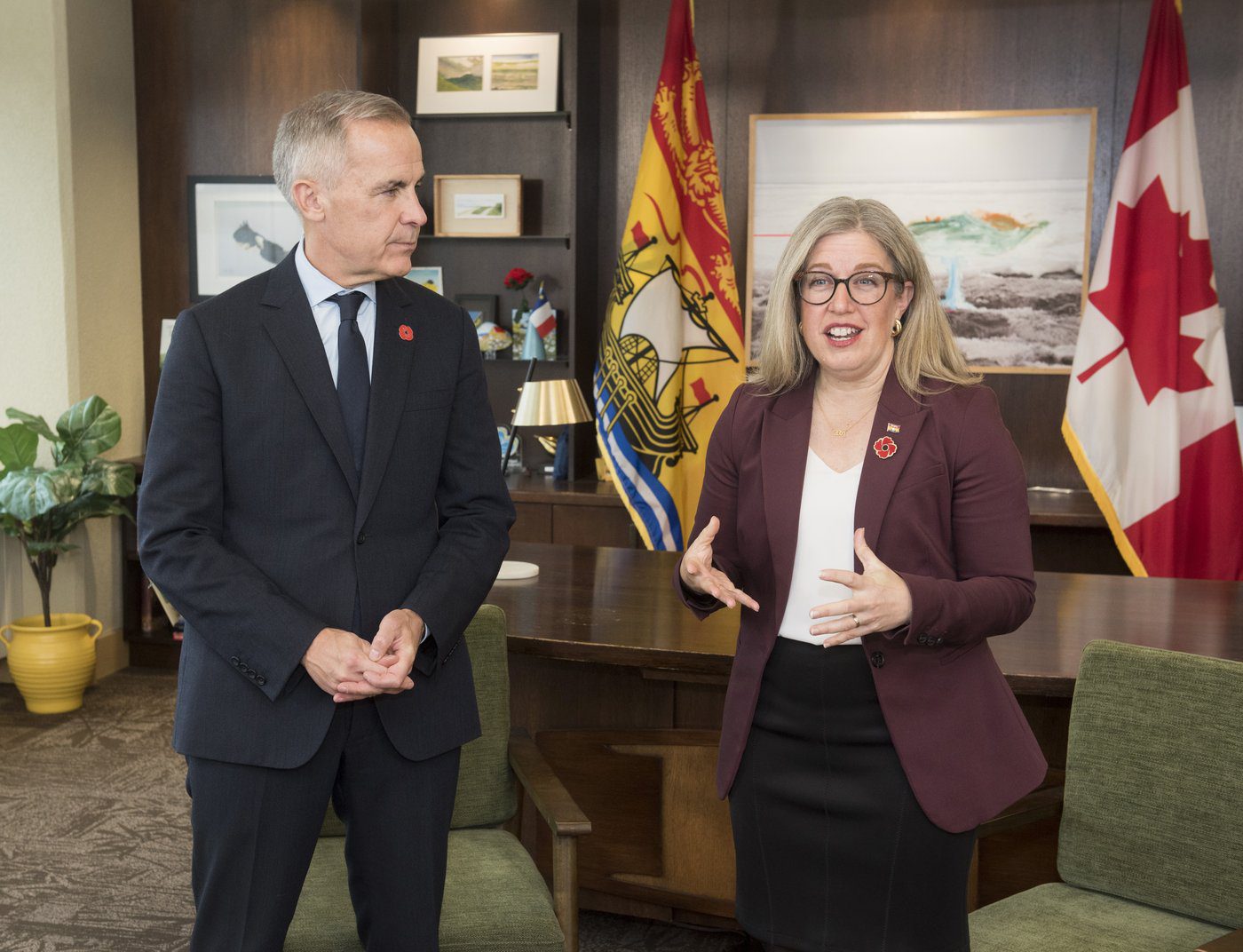FREDERICTON — New Brunswick’s premier says a proposed tungsten mine in Sisson Brook, N.B., can help the province play a major role in the national economy and securing Canadian sovereignty, now that it is on a list of projects that could be fast-tracked by the federal government.
Prime Minister Mark Carney announced Thursday that Northcliff Resources’ tungsten mine in New Brunswick, a nickel mine in northern Ontario, a hydroelectric project in Iqaluit, a transmission line and an LNG project both in northwest British Columbia and a graphite mine in Quebec have been added to the group of projects being referred to the Major Projects Office.
Tungsten is an exceptionally strong metal used in steel production for military and mining equipment, and for storing energy.
Once a project is referred to the Major Projects Office, it is reviewed and returned with recommendations to the government, which has the final say on whether to give it the national interest designation. The projects getting this designation could be exempt from certain federal environmental laws and be fast-tracked for approval.
“This project is poised to become a major source of the critical minerals that are essential to Canada’s economic security, the defence sector, and the clean energy sector… which we know we need as we transition to more wind, more solar, more renewable energy on our grid,” Premier Susan Holt said during a news conference Thursday afternoon.
The federal government says tungsten markets are highly concentrated, and this project has the potential to make Canada a reliable supplier of the critical mineral to domestic and international partners while creating hundreds of new jobs.
The premier said the mine 60 kilometres northwest of Fredericton is home to one of the largest undeveloped tungsten deposits in the world, and has a significant amount of molybdenum. Both are on Ottawa’s list of critical minerals whose supply chain is threatened and whose production is essential to Canada’s national security.
Holt said her team has been in discussions with First Nations and communities in the area over the past several months, picking up on conversations that began years ago.
“Some of this is going back quite a ways, because a lot of the activity around this project happened in 2014, 15, 16, 17, where communities like the Woodstock First Nation, and certainly the Wolastoqey Nations were engaged in the process. The neighbouring communities in the municipality of Woodstock and others were engaged in the processes, along with our industry associations and the rest,” she said.
The premier said these discussions were restarted about a year ago after she formed government and “dusted the project off.”
“Minister Herron sent letters to every nation in this province, and we sat down with them and talked about our desire to develop minerals and to develop the Sisson Mine,” Holt said, adding that they are in the early stages of “refreshing” their equity agreements with First Nations.
Back in 2017, an agreement was reached with six First Nations to receive a percentage of mine royalties.
It’s too soon to say if a present-day agreement would mirror that arrangement, Holt said, “that’s the kind of thing that’s being discussed and negotiated now.”
“Projects like this move forward when everybody benefits, and the best way to do that is with equity relationships with First Nations and others. And so that’s a piece that we’re going to be integrating and refreshing in the agreements that exist now,” the premier said.
The government has also been “re-crunching” the numbers to estimate how much in provincial royalties this project could bring in, she added.
“We used to use the estimates of about $280 million of royalties, $245 million of tax revenue. Some of that is dependent on the price of the resource and the cost to development, so those are the initial estimates we’re working with,” she said.
Carney and Holt teased federal support for a major project in the province on Monday after the pair met in Holt’s downtown Fredericton office. Carney was in town to tour the warehouse of a prefabricated home manufacturing company and highlight Ottawa’s buy-Canadian policy.
During a separate news conference that afternoon, Holt said she advocated for Ottawa’s help moving forward with a number of projects, including support for mining, modular housing, upgrades on the Port of Saint John and Port of Belledune, and the Eastern Energy Partnership, which could link energy systems across Atlantic Canada and beyond.
Meantime, in Montreal, Dominic Leblanc, the minister of Intergovernmental Affairs and One Canadian Economy, said referring the graphite mine and a Becancour, Que., battery plant to the major projects office “is sending a very strong signal about the potential of this project for Canada’s economy and for Canadian sovereignty.”
Leblanc told a news conference at Nouveau Monde Graphite’s Montreal offices that the mine, once operational, would supply Canada and its allies with a critical mineral used for electric vehicle batteries and energy storage systems, which also has many applications for national defence.
This report by The Canadian Press was first published Nov. 13, 2025.
By Lyndsay Armstrong in Halifax, with files from Morgan Lowrie in Montreal.
The Canadian Press





